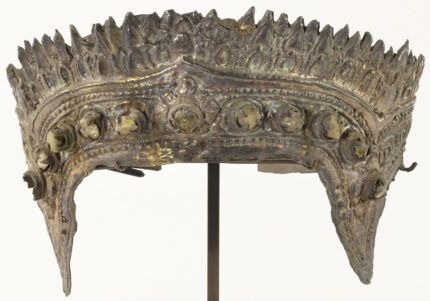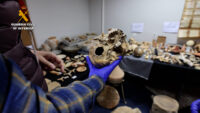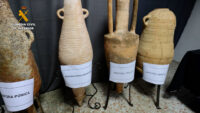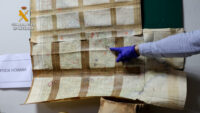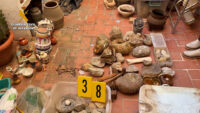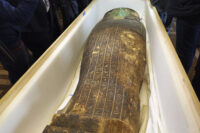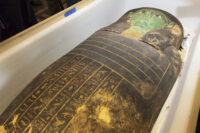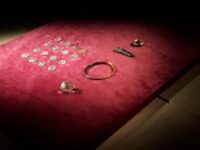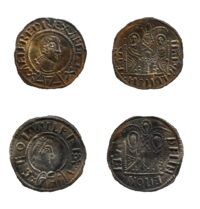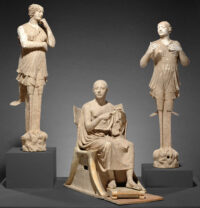 A collection of 77 extraordinary jewels, including ancient Khmer royal crowns, has been returned to Cambodia by the heir of the late Douglas Latchford, an art dealer, avid collector and shameless trafficker of antiquities who once threated to sue your humble blogger.
A collection of 77 extraordinary jewels, including ancient Khmer royal crowns, has been returned to Cambodia by the heir of the late Douglas Latchford, an art dealer, avid collector and shameless trafficker of antiquities who once threated to sue your humble blogger.
Backstory: In a badly-formatted letter full of grammatical errors and contradictions, a law firm representing Latchford demanded that I take down this post or be sued for defamation. The post is still up, as you see, and the threat was empty, but I take it as a point of pride nonetheless that all of Latchford’s bluster would shortly thereafter 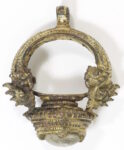 blow up in his face as the cases against him piled up ever higher. For decades Latchford had commissioned looters to pillage Cambodian temples, starting during the civil war in the 1960s. The horrors of Khmer Rouge rule in the 1970s were nothing but a boon to his pillaging operation, and his looters often had deals with the military to aid in their thefts. His minions were actively stealing and smuggling well into the 2000s.
blow up in his face as the cases against him piled up ever higher. For decades Latchford had commissioned looters to pillage Cambodian temples, starting during the civil war in the 1960s. The horrors of Khmer Rouge rule in the 1970s were nothing but a boon to his pillaging operation, and his looters often had deals with the military to aid in their thefts. His minions were actively stealing and smuggling well into the 2000s.
A high-end dealer in the international antiquities market, Latchford supplied stolen Cambodian art to 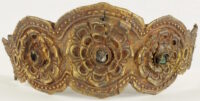 private collectors, auction houses, other dealers and museums around the world. He wrote books about Khmer art and garnered a reputation as one of the premier experts on the subject. His loot formed the backbone of several major Southeast Asian art collections in museums in the United States. He so adroitly bamboozled everyone that he even managed to secure the Cambodian equivalent of a knighthood for his donations of money and artifacts he had stolen to the national museum of the country he had stolen them from.
private collectors, auction houses, other dealers and museums around the world. He wrote books about Khmer art and garnered a reputation as one of the premier experts on the subject. His loot formed the backbone of several major Southeast Asian art collections in museums in the United States. He so adroitly bamboozled everyone that he even managed to secure the Cambodian equivalent of a knighthood for his donations of money and artifacts he had stolen to the national museum of the country he had stolen them from.
 The dominoes started to fall in 2011 when Sotheby’s tried to sell the Duryodhana statue looted from the Koh Ker temple. Sotheby’s sale was blocked when Cambodia officially requested its return and after negotiations failed, the U.S. Attorney filed a forfeiture suit to confiscate the statue. Many lies about its provenance came out in the investigation, with Latchford playing a starring role, forging ownership documents and lying on customs forms about the statue’s origin, age and market value.
The dominoes started to fall in 2011 when Sotheby’s tried to sell the Duryodhana statue looted from the Koh Ker temple. Sotheby’s sale was blocked when Cambodia officially requested its return and after negotiations failed, the U.S. Attorney filed a forfeiture suit to confiscate the statue. Many lies about its provenance came out in the investigation, with Latchford playing a starring role, forging ownership documents and lying on customs forms about the statue’s origin, age and market value.
His legal team threatened me in 2014. Four years later in November 2018, the U.S. Attorney for the Southern District of New York indicted him on several counts of wire fraud, smuggling and conspiracy related to his decades of trafficking archaeological material. Latchford had UK and Thai citizenship and lived in Bangkok which was the hub of his smuggling operation for decades. He was very ill at the time of the indictment, so there was no attempt at extradition and he died at age 88 in the summer of 2020. The indictment against him was dismissed after his death.
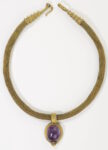 His daughter Julia Latchford agreed to return his entire ill-gotten collection to Cambodia. In 2021 and 2022, she returned more than 125 stone and bronze statues to Cambodia. Last week, the jewels arrived home. They include crowns, necklaces, bracelets, earrings, amulets and belts from the Khmer Empire (9th – 14th c. A.D.) some of which appeared in Latchford’s 2008 book Khmer Gold: Gifts of the Gods. Many of them have never been seen before not even in photographs.
His daughter Julia Latchford agreed to return his entire ill-gotten collection to Cambodia. In 2021 and 2022, she returned more than 125 stone and bronze statues to Cambodia. Last week, the jewels arrived home. They include crowns, necklaces, bracelets, earrings, amulets and belts from the Khmer Empire (9th – 14th c. A.D.) some of which appeared in Latchford’s 2008 book Khmer Gold: Gifts of the Gods. Many of them have never been seen before not even in photographs.
Cambodian researchers believe that some of the gold adorned the earliest Angkorian kings, who founded the Khmer Empire (802 to 1431) and built its majestic temples.
“We did not know these items existed,” added Touch, who was in London last week to help oversee the return of the objects. “This is much more than what is in our museum.”
By weight alone, officials said, the gold is worth more than $1 million. But Bradley J. Gordon, a Phnom Penh-based lawyer for Cambodia who negotiated the return of the items, said the value was difficult to estimate because Angkorian gold is rare, has never been lawfully exported from Cambodia and almost never appears on the market.
“We really don’t want to put a price on it,” he said.
